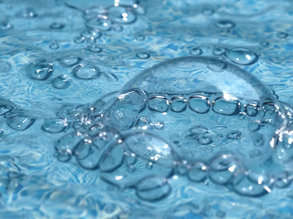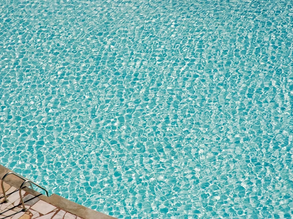Aquatic therapy, also known as aqua therapy, is a form of physical therapy that takes place in a pool or other aquatic environment. This type of therapy is often used to relieve pain and improve mobility in individuals with various musculoskeletal conditions, including back pain. Aqua therapy exercises for back pain can be an effective way to manage symptoms and improve overall function.
Back pain is a common condition that affects millions of people worldwide. It can be caused by a variety of factors, including poor posture, muscle strain, or injury. While there are many treatments available for back pain, including medication and surgery, aquatic therapy is a non-invasive option that can be used alone or in combination with other treatments. By using the buoyancy and resistance of water, aqua therapy exercises for back pain can help reduce pain, improve flexibility, and strengthen muscles.
Benefits of Aqua Therapy for Back Pain
Aqua therapy or aquatic exercise is a low-impact form of exercise that is performed in a pool or other body of water. It has been shown to be an effective treatment for chronic low back pain, providing numerous benefits to people with this condition.
Buoyancy and Reduced Joint Stress
One of the main benefits of aqua therapy is the buoyancy of water, which reduces the stress on joints and muscles. When immersed in water, the body weight is reduced by up to 90%, which means that there is less pressure on the spine and joints. This makes it a great option for people with arthritis or osteoporosis, as well as those who are recovering from surgery or injury.
Muscle Strengthening and Flexibility
Aqua therapy also helps to strengthen muscles and improve flexibility. The resistance provided by the water helps to build muscle strength, while the buoyancy of the water allows for greater range of motion, making it easier to perform exercises that may be difficult on land. This can help to improve mobility and reduce pain.
Improving Balance and Stability
Another benefit of aqua therapy is that it can help to improve balance and stability. The water provides a stable environment that can help to improve proprioception, or the body’s sense of position in space. This can be especially helpful for older adults or those with balance issues.
In summary, aqua therapy is a safe and effective way to treat chronic low back pain. It provides numerous benefits, including reduced joint stress, muscle strengthening and flexibility, and improved balance and stability. It is a low-impact form of exercise that can be tailored to an individual’s needs and abilities, making it a great option for people of all ages and fitness levels.
Key Aqua Therapy Exercises
Aqua therapy exercises can be a great way to relieve back pain. Here are some of the most effective exercises that can be done in the water.
Stretching and Warm-Up Movements
Before starting any exercise routine, it is important to warm up and stretch. This is especially true for those suffering from back pain. In water, stretching and warm-up movements can be done with ease. Some of the best stretching and warm-up movements for aqua therapy include:
- Knee-to-Chest Exercise: This exercise is great for stretching the lower back. Simply hold onto the side of the pool and bring one knee up to your chest, holding it for a few seconds before releasing and repeating with the other leg.
- Arm Circles: This exercise is great for warming up the shoulder muscles. Stand in chest-deep water and extend your arms out to the sides, then make small circular motions with your arms.
Core Strengthening Exercises
Strengthening your core muscles is essential for reducing back pain. Here are some effective core strengthening exercises for aqua therapy:
- Flutter Kicks: This exercise is great for strengthening your lower abs. Hold onto the side of the pool and extend your legs out in front of you. Then, alternate lifting each leg up and down in a fluttering motion.
- Leg Lifts: This exercise is great for strengthening your lower back and hips. Hold onto the side of the pool and lift one leg straight out behind you, then lower it back down and repeat with the other leg.
Lower Back Targeted Exercises
Targeting the lower back muscles can help to alleviate back pain. Here are some exercises that can target the lower back muscles effectively:
- Superman Exercise: This exercise is great for strengthening the lower back muscles. Hold onto the side of the pool and extend your arms and legs out in front of you, then lift them up and hold for a few seconds before lowering them back down.
- Squats: Squats are great for strengthening the lower back, as well as the legs and glutes. Stand in chest-deep water with your feet shoulder-width apart, then squat down as if you were sitting in a chair.
Aqua Therapy Techniques and Equipment
Aqua therapy is a form of exercise therapy that can help alleviate back pain. The buoyancy of water provides a unique environment that reduces stress on the spine and joints, allowing for pain-free movement and strengthening. The following subsections describe some of the techniques and equipment used in aqua therapy for back pain.
Utilizing Resistance for Muscle Building
Resistance is a key component of muscle building, and it can be achieved in a variety of ways during water exercises. Natural resistance from the water can be used, but specialized equipment such as surgical tubing, resistive devices for the hands or feet, and flotation devices can also be used to increase resistance. These tools can be used to target specific muscle groups and increase the effectiveness of the exercise.
Water Walking and Jogging
Water walking and jogging are low-impact exercises that can help improve cardiovascular health and strengthen the muscles in the legs and back. The natural resistance of the water provides a challenging workout, while the buoyancy reduces the impact on the joints. These exercises can be done in shallow or deep water, and can be modified to increase or decrease the intensity.
Equipment Aids: Kickboards and Flotation Devices
Kickboards and flotation devices can be used to target specific muscle groups and increase resistance during water exercises. Kickboards can be used to work the legs and core, while flotation devices can be used to work the arms and upper body. These tools can also be used to modify the intensity of the exercise and provide support for those with limited mobility.
Overall, aqua therapy is an effective form of exercise therapy for back pain. The unique environment of the water provides a low-impact workout that can help alleviate pain and improve strength and flexibility. By utilizing resistance, water walking and jogging, and specialized equipment such as kickboards and flotation devices, individuals can tailor their workout to their specific needs and achieve the best possible results.
Designing an Aqua Therapy Program
Aqua therapy exercises are an effective way to manage back pain and improve overall quality of life. Designing an appropriate exercise program is essential to ensure maximum benefit from the therapy. Here are some key considerations when designing an aqua therapy program:
Setting Goals and Progression
The first step in designing an aqua therapy program is to set clear and achievable goals. These goals should be specific to the individual’s condition and should take into account their overall fitness level, physical limitations, and rehabilitation needs. The goals should be set in consultation with a qualified healthcare professional, such as a physical therapist.
Once the goals have been established, it is important to develop a progression plan that gradually increases the intensity and duration of the exercises. This helps to prevent injury and ensures that the individual is able to continue to make progress towards their goals.
Incorporating Various Water Exercises
An effective aqua therapy program should include a variety of exercises that target different muscle groups and address specific areas of weakness or pain. Some exercises that may be included in an aqua therapy program include:
- Water walking or jogging
- Leg lifts and kicks
- Arm circles and rotations
- Torso twists and stretches
- Pool noodles or weights for resistance training
It is important to vary the exercises and the intensity of the workout to prevent boredom and ensure that the individual is challenged and engaged in the therapy.
Monitoring Intensity and Duration
Monitoring the intensity and duration of the aqua therapy program is critical to ensuring that the individual is making progress towards their goals and is not at risk of injury. The intensity of the workout can be adjusted by changing the speed of the exercises, the resistance of the water, or the length of the workout.
It is also important to monitor the duration of the workout to ensure that the individual is not overexerting themselves. A qualified healthcare professional can help to determine the appropriate duration of the workout based on the individual’s fitness level and rehabilitation needs.
In conclusion, designing an effective aqua therapy program requires careful consideration of the individual’s goals, progression plan, and exercise selection. By incorporating a variety of exercises and monitoring the intensity and duration of the workout, individuals can experience significant improvements in their quality of life and overall function.
Safety and Considerations in Aqua Therapy
When it comes to aqua therapy exercises for back pain, safety should be a top priority. Aqua therapy can be a great way to relieve chronic low back pain, but it is important to understand medical conditions and limitations, as well as proper technique and supervision.
Understanding Medical Conditions and Limitations
Before starting aqua therapy, it is important to consult with a physician or physical therapist to determine if it is safe to do so. Individuals with certain medical conditions or disabilities, such as stroke or diabetes, may have limitations when it comes to aquatic exercise. It is important to discuss any medical conditions or limitations with a healthcare professional before starting any new exercise routine.
Proper Technique and Supervision
Proper technique and supervision are also important when it comes to aqua therapy. It is important to work with a qualified physical therapist who can teach proper technique and ensure that exercises are done safely and effectively. This is especially important for individuals with chronic low back pain, as incorrect technique can aggravate the condition and lead to further injury.
In addition, it is important to have proper supervision when doing aqua therapy exercises. This can help prevent accidents and ensure that exercises are done correctly. A qualified physical therapist should always be present to supervise aqua therapy sessions and provide guidance when needed.
Overall, aqua therapy can be a safe and effective way to relieve chronic low back pain. By understanding medical conditions and limitations, as well as proper technique and supervision, individuals can safely and effectively incorporate aqua therapy into their exercise routine.



